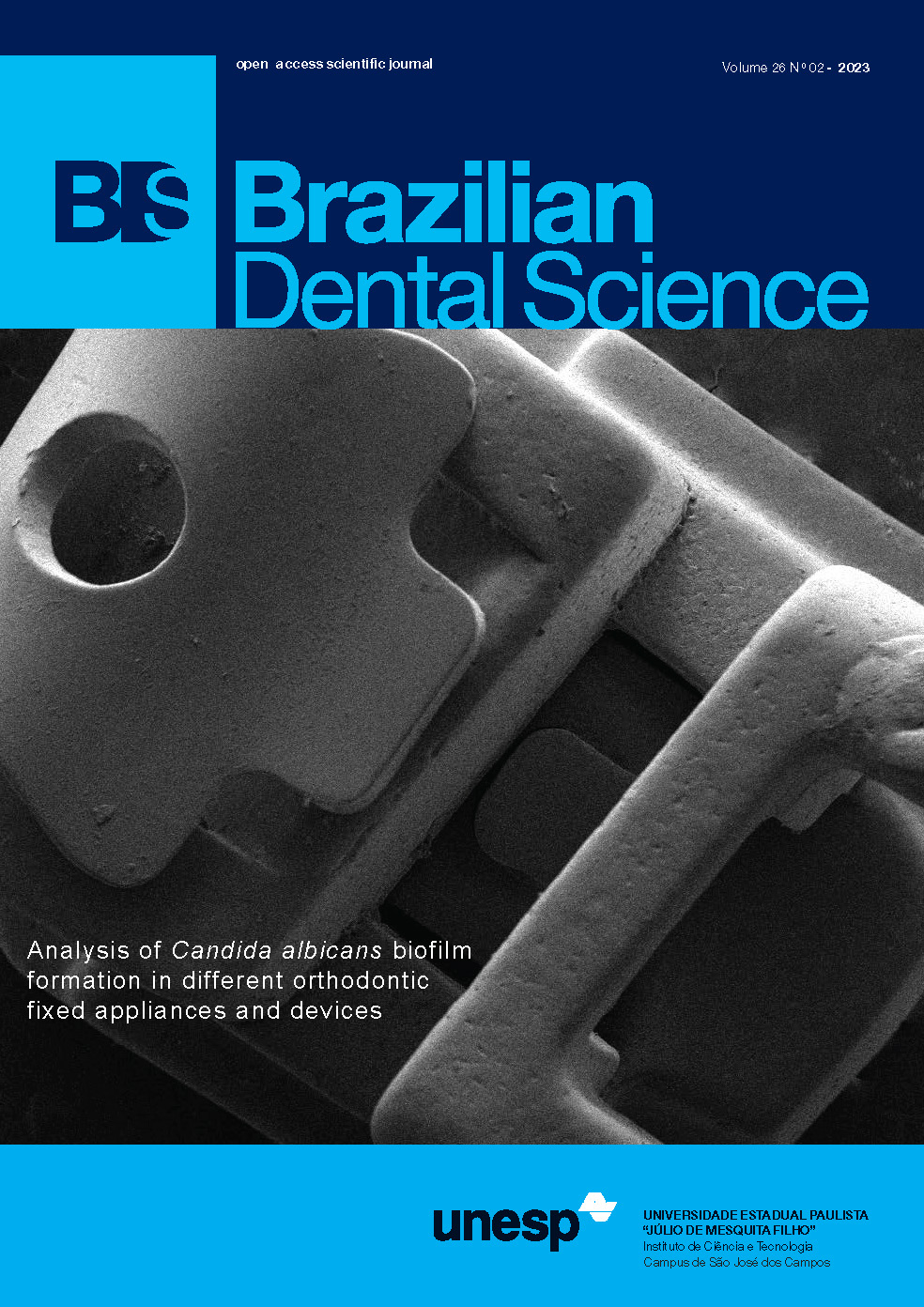Multidisciplinary action in a patient with cleft lip and palate: esthetic-functional dentofacial treatment for more than two decades
DOI:
https://doi.org/10.4322/bds.2023.e3801Abstract
Cleft lip and palate is a very common congenital defect in which embryonic facial processes do not achieve the ideal facial formation during their development which can cause malformation. Multiple dentistry specializations, especially oral and maxillofacial, orthodontics, oral rehabilitation and dental aesthetics are required in order to correct lip and oral cavity malformations by this congenital defect with the objective of functional and aesthetics improvement. The clinical case reported show the multidisciplinary approach in a patient with cleft lip and palate implementing an aesthetic and functional dentofacial rehabilitation. The case involves a 27-year-old female patient LCLG, Caucasian, with the presence of unilateral congenital cleft lip and palate on the left side, who started rehabilitative and reparative treatment at 3 months of age. She then started pediatric orthodontic treatment for angle class 3 crossbite correction at 7 years of age. After complete replacement of deciduous to permanent dentition at the age of 11, the patient started orthodontic treatment with a fixed appliance for several years and restorative treatment with composite resin reanatomize the anterior teeth due to agenesis of elements 22 and 25. After a few years when the resin restorations were no longer biologically favorable, an aesthetic rehabilitation treatment with ceramic laminates was planned through smile digital planning soon after completing the orthodontic treatment. This case report demonstrates that high aesthetic, functional and psychological expectations of a patient with congenital defect compromise throughout her life were met through a multidisciplinary dental treatment based on correct diagnosis and digital planning.
KEYWORDS
Congenital abnormalities; Malocclusion; Dental Technology; Rehabilitation; Diagnosis.
Downloads
Published
How to Cite
Issue
Section
License
Brazilian Dental Science uses the Creative Commons (CC-BY 4.0) license, thus preserving the integrity of articles in an open access environment. The journal allows the author to retain publishing rights without restrictions.
=================




























